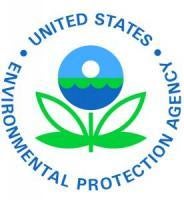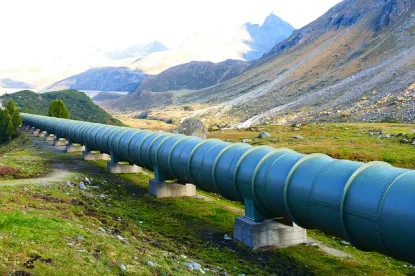Joint memorandum of agreement highlights federal permitting flexibility while ensuring continued environmental protection
ANCHORAGE – The U.S. Environmental Protection Agency (EPA) and U.S. Department of the Army (Army) signed a Memorandum of Agreement (MOA) that provides guidance on wetlands mitigation requirements in the state of Alaska. The MOA sets forth the flexibility in existing Clean Water Act (CWA) regulations and approaches that can be employed in Alaska due to its abundance of wetlands.
“Our revised guidance offers a consistent and practical approach to wetlands protection and aquatic resource restoration in Alaska,” said EPA Administrator Scott Pruitt. “We look forward to working with the State of Alaska and our federal partners to implement the guidance, which will produce better environmental and economic results across the state.”
“This updated guidance provides a commonsense approach to management of the Section 404 program in Alaska given its abundance of wetlands and other unique circumstances,” said Assistant Secretary of the Army for Civil Works R.D. James. “The guidance is consistent with existing regulations and offers reasonable opportunities for restoring those areas in most need of improvement.”
“We are encouraged that the EPA and Army Corps recognize Alaska’s unique context with respect to wetlands, mitigation, and development under the Clean Water Act, and we look forward to working together with them to protect these values using the flexibility provided by this new MOA," said Governor Bill Walker.
“This agreement is an important step toward a consistent and meaningful mitigation policy for Alaska,” said Senator Lisa Murkowski (R-AK). “I appreciate the assurance the agencies have given us that this new framework will not simply increase the amount of mitigation that is being required or place new rules on small projects that don’t currently require mitigation. Instead, this will allow mitigation dollars to be used where they are most needed and to address real environmental needs. I look forward to working with EPA and the Army Corps during implementation to ensure these commitments are met.”
“Alaska is different than the Lower 48—from our still developing infrastructure, to the rugged challenges of building in our wild Arctic environment, we face unique circumstances requiring flexibility in implementing wetlands mitigation,” said Senator Dan Sullivan (R-AK).“When the Lower 48 states were being developed, they didn’t need to deal with today’s onerous regulatory restrictions. I am encouraged to see EPA and the Army Corps, recognizing these issues. I hope we can continue to work together to set up a practical regulatory structure that protects our watersheds and cleans up existing environmental problems, while allowing us to the build projects we need to build in Alaska.”
“Since I began serving in Congress, I’ve worked hard to make sure people in Washington know that Alaska is different and our state cannot be managed the same way as the Lower 48,” said Congressman Don Young (R-AK). “With this MOA, Administrator Pruitt and Assistant Secretary R.D. James have shown that they understand the challenges that Alaska faces with wetland mitigation. Wetlands are critical to the environmental health of Alaska and wetland mitigation is an important consideration to responsible resource development, however in a state like mine that is home to 63 percent of the nation’s wetland ecosystems, this means mitigation needs to look different than it does in other areas of the country. I thank Administrator Pruitt and the EPA for this MOA and look forward to continuing our work to responsibly develop Alaska’s natural resources.”
As part of the mitigation requirements of CWA Section 404 permit review, applicants must demonstrate that they have taken appropriate and practicable steps to first avoid adverse impacts to wetlands and other aquatic resources, and then minimize unavoidable adverse impacts to wetlands and other aquatic resources by making changes to project design or construction methods. Lastly, compensatory mitigation is required, when necessary, to offset remaining unavoidable impacts by, for example, restoring or enhancing other wetlands in the watershed in order to replace aquatic functions and values that are lost as a result of the permitted impacts.
Today’s MOA reflects changes that have occurred in mitigation regulation, policy, and practice over the past two decades. It is designed to ensure that mitigation requirements will be fairly and transparently implemented, and are proportional to the potential adverse impacts under review. It will also ensure that appropriate compensatory mitigation is included.
The MOA highlights six key guiding principles regarding flexibility in mitigation requirements and policy that recognize the unique circumstances that exist in regions of Alaska:
- Avoiding wetlands may not be practicable where there is a high proportion of land in a watershed or region which is jurisdictional wetlands;
- Restoring, enhancing, or establishing wetlands for compensatory mitigation may not be practicable due to limited availability of sites and/or technical/logistical limitations;
- Compensatory mitigation options over a larger watershed scale may be appropriate given that compensation options are frequently limited at a smaller watershed scale;
- Where a large proportion of land is under public ownership, compensatory mitigation opportunities may be available on public land;
- Out-of-kind compensatory mitigation may be appropriate when it better serves the aquatic resource needs of the watershed; and
- Applying a less rigorous permit review for small projects with minor environmental impacts is consistent with the Section 404 program regulations.
The 2018 EPA-Army Alaska Mitigation MOA can be found at: www.epa.gov/cwa-404/cwa-policy-and-guidance.
Information on US Army Corps of Engineers Alaska District’s Regulatory Program and permitting procedures can be found at http://www.poa.usace.army.mil/Missions/Regulatory.aspx.
Read this article on the EPA's website here.




 />i
/>i
